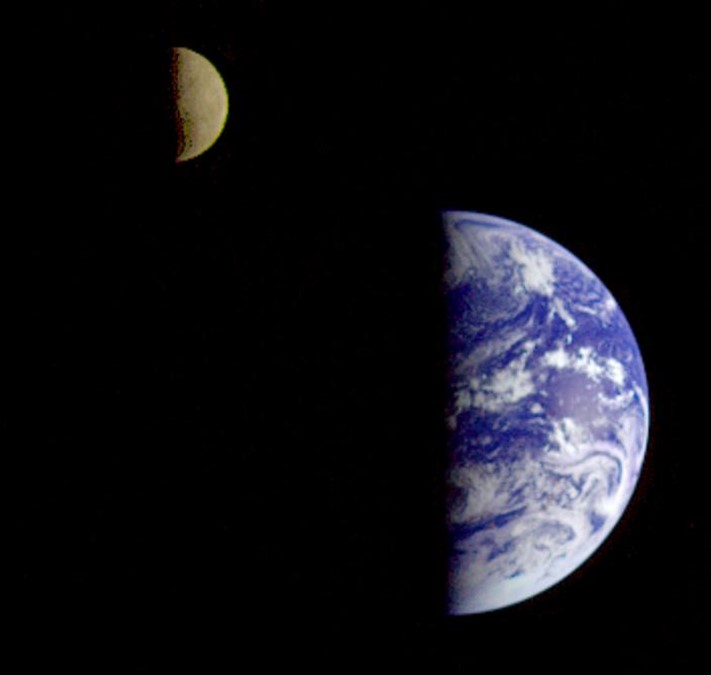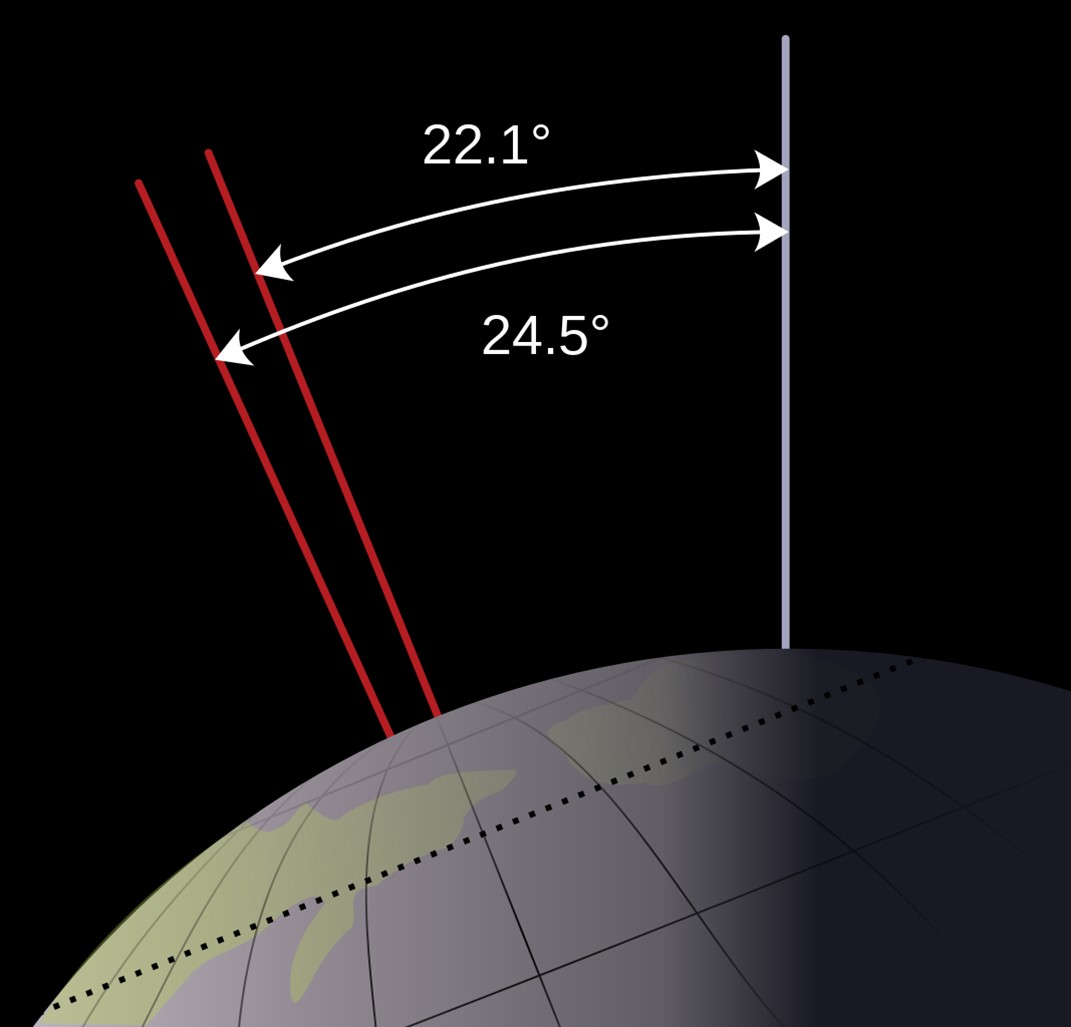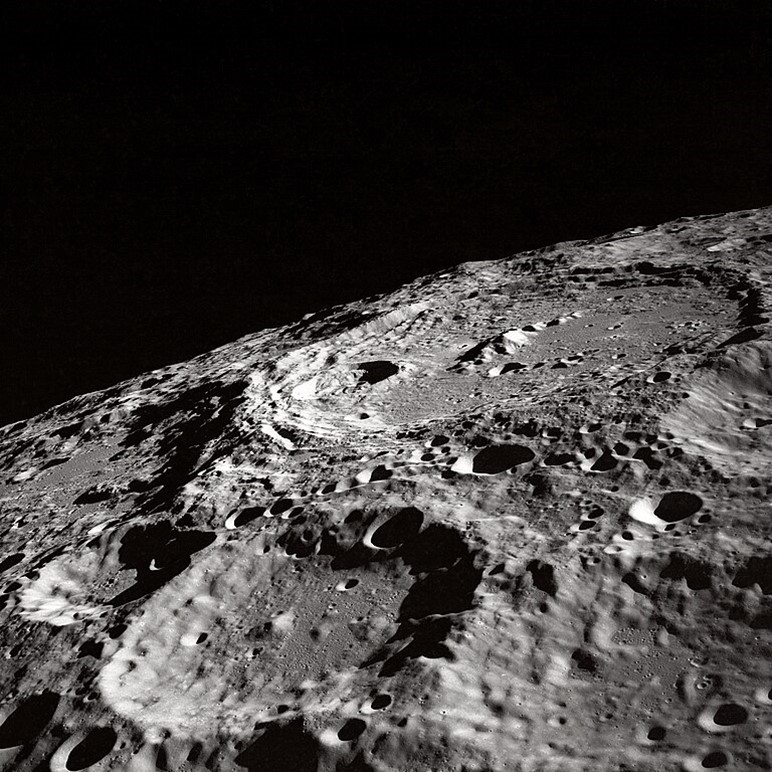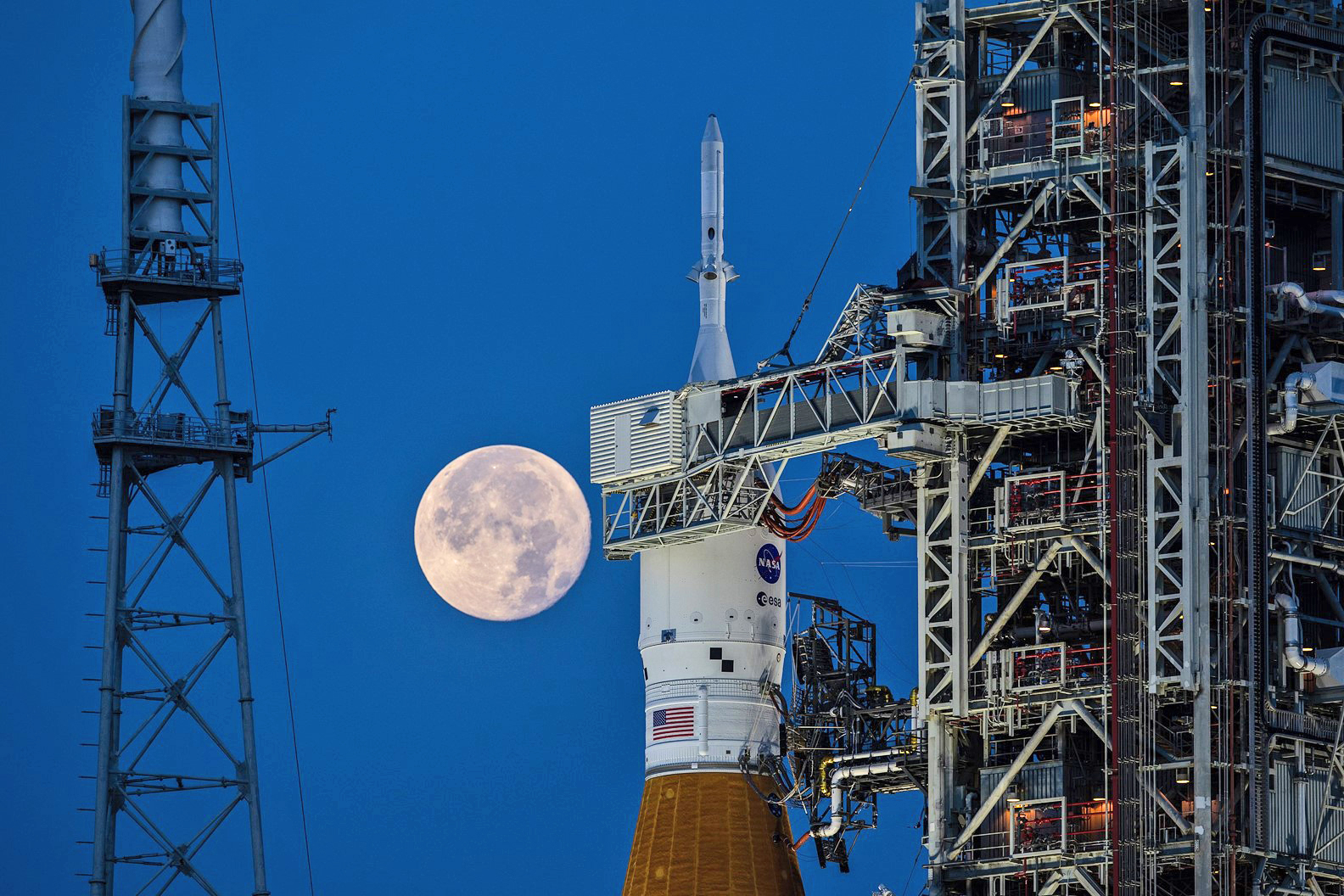
Credit: NASA, public domain, via Wikimedia Commons
What if Earth didn’t have a moon? Well, nearly everything about our home planet would be different—so much, we’d hardly recognize it.
Our Moon is a quarter the size of Earth, far bigger than most planets’ moons. Scientists think it formed when a smaller planet crashed into Earth 4 billion years ago, knocking off a chunk that eventually became our Moon.
Its large size is key to its dramatic effects on Earth.
The gravity of the Moon pulls on the oceans to produce tides. Tidal range would be only a third its size otherwise. Tides define coastal ecosystems and influence what kind of life can live there.
Tides also shape ocean currents—like the ocean conveyor we discussed on another EarthDate. Currents moderate global weather and temperature, helping create the stable climate that has allowed human civilization to thrive.
Tidal friction has also slowed Earth’s rotation. Billions of years ago, a day on Earth lasted just 10 hours. Without the Moon, it would be even shorter than that!
The Moon also stabilizes the tilt of Earth on its axis, which stabilizes our seasons. Planets without moons have much more dramatic seasonal variations.
Adapting to erratic seasons and temperatures, and days as short as 6 hours—the plants and animals that could live on Earth would likely be very different.
Without the Moon, humans might not be here at all!
Background
Synopsis: Earth’s Moon has fascinated humans for millennia, and no wonder! It is the brightest object in the night sky and even inspired the word “lunatic.” But what if Earth’s natural satellite wasn’t out there? What would change, and what would that mean for us?
- Earth’s Moon is its nearest celestial neighbor at around 240,250 mi away (384,400 km).
- It is 27% of the size of Earth, with a surface area of 14.6 million mi2 (37.8 million km2), comparable to the surface area of Asia at 17.2 million mi2 (44.5 million km2).
- The Greeks referred to it as “Artemis,” and the Romans called it “Luna.”
- Our Moon has captivated human imagination for millennia through culture, folklore, religion and art.
- Earth’s natural satellite has aided our understanding of the universe as an inspirational target for space exploration.
- While Earth is thought to be 4.54 billion years old, the Moon is slightly younger at just around 4.50 billion years old.
- There have been a few hypotheses about the formation of the Moon over the years, but most don’t match the observed physical characteristics of our Moon.
- The hypothesis that best fits the data suggests that two young planets (planetesimals), Earth and Theia, were forming at about the same distance from the Sun when they collided just 30 to 100 million years after Earth formed.
- The smaller planet, Theia, was about the size of Mars, and crashed into Earth, spinning it faster and snatching some of its mantle as the remainder ricocheted out into space and coalesced into the Moon. Theia may have left some pieces of itself behind that scientists have recently found at the base of Earth’s mantle.
- This origin story helps explain why Earth’s Moon is so much larger than most moons in our solar system. It is especially large in proportion to Earth’s size.
- But what if Earth and Theia never collided? What if Earth had no moon?
- Without the Moon’s gravitational pull, tides would be only about a third of their current sizes, driven only by the gravity of the distant Sun.
- The highest tides occur when the Sun, Earth and Moon are aligned during full and new moons.

As the Moon’s gravity tugs on Earth, its oceans bulge slightly outward, producing ocean tides. When the gravitational pull of the Sun and Moon are combined, you get more-extreme high and low tides. This explains high and low tides that happen about every two weeks. Note: this figure is not to scale. The Sun is much bigger and farther away.
Credit: NOAA SciJinks - The Moon’s gravity causes the ocean surface to bulge out toward it around the equator and thin out at the poles, so without the pull of the Moon, the water would slosh back toward the poles.
- Tides are important for marine ecosystems and have strongly influenced the evolution and breeding patterns of marine and coastal organisms, so life might have followed a different evolutionary path as organisms left the oceans for land.
- Tidal motion helps to stabilize Earth’s climate, because it drives ocean currents that propel Earth’s global ocean conveyor that moderates weather and temperature (ED-93 Earth’s Ocean Conveyor). Climate stability has enabled civilizations to thrive since the last Ice Age.
- The highest tides occur when the Sun, Earth and Moon are aligned during full and new moons.
- The Moon is tidally locked with Earth, meaning Earth’s gravity is dragging the Moon, forcing it to rotate just once a month so that it only shows one face to Earth.
- This causes tidal friction, which has gradually slowed Earth’s rotation to the 24-hour period we know as a day.
- During the reign of the dinosaurs, Earth’s day was just 22 hours, and a few billion years back, it was just 10 hours long (ED-168 The Day’s Getting Longer).
- Without the braking motion of the Moon, Earth would probably rotate faster, resulting in shorter days that could be as short as 6 hours long.
- With a more turbulent atmosphere and just a few hours of daylight and darkness each day, evolution might have followed a very different path.
- The pull of the Moon’s gravity also helps to stabilize Earth’s axial tilt, or obliquity, within a very small range, making our seasons generally predictable.
- Earth’s axis is currently tilted 23.4° relative to our orbital plane, but as the planet spins, its axis shifts between 22.1° and 24.5°, just 2.4°, about every 41,000 years (ED-214 Earth’s Odd Orbit).

Range of the tilt of Earth's axis of rotation (obliquity). The present tilt is 23.4°.
Credit: NASA, Mysid, public domain, via Wikimedia Commons - Axial tilt drives Earth’s seasons, and higher obliquities result in more-extreme summers and winters as the poles tilt farther toward or away from the Sun.
- Without the stabilizing effect of the Moon, the range of Earth’s tilt angle could increase or become erratic, producing unpredictable seasons that could rapidly range from deadly heat to ice ages.
- Planets that lack big moons, like Mars, have axial tilt ranges of 25° or more over millennia, ten times the range of Earth.
- Uranus has a 97° tilt that results in 42 continuous years of sunlight followed by 42 continuous years of night.
- Earth’s axis is currently tilted 23.4° relative to our orbital plane, but as the planet spins, its axis shifts between 22.1° and 24.5°, just 2.4°, about every 41,000 years (ED-214 Earth’s Odd Orbit).
- If there was no moon, we couldn’t have solar or lunar eclipses, because these events are simply the shadow of one object on another.

This diagram illustrates the orientations required for new and full moons, and for lunar and solar eclipses.
Credit: Nela (nyabla.net), CC BY-SA 4.0, via Wikimedia Commons- Eclipses need three celestial bodies: one to cast the light, one to cast a shadow, and one to receive the shadow. Lunar eclipses are shadows cast by Earth on the Moon, while solar eclipses are shadows cast by the Moon on Earth, which appear to block out the sun from Earth’s surface.
- The Moon helps to shield us from asteroids and meteoroids because its gravitational pull can attract or deflect objects headed toward Earth.

This oblique view of Keeler and Heaviside Craters on the far side of the Moon was photographed by the Apollo 10 astronauts in May of 1969.
Credit: NASA Apollo, public domain, via Wikimedia Commons- The absence of our protective Moon could potentially lead to catastrophic effects, or worse, extinction events on Earth.
- The Moon is a destination for the engineering marvels of lunar missions and studies of its geology and the history of the solar system.
- The Moon is the only celestial body that humans have walked on—so far.
- Between 1969 and 1972, 12 American astronauts walked on the Moon, but no human has set foot there in the decades since.
- The reason we could walk on the Moon is because a conventional rocket can make the trip in 3 days and radio signals take just 2.5 seconds to travel between the Earth and the Moon at the speed of light. Mars and Venus will take months to reach by conventional rocket travel and will require many minutes per transmission for radio communication.
- The Moon is our stepping stone out into the universe.

A full moon is in view from Launch Complex 39B at NASA’s Kennedy Space Center in Florida on June 14, 2022. The Artemis I Space Launch System (SLS) and Orion spacecraft, atop the mobile launcher, are being prepared for a “wet” dress rehearsal to practice timelines and procedures for launch. Through Artemis, NASA will land the first woman and first person of color on the lunar surface, paving the way for a long-term lunar presence and using the Moon as a stepping stone on the way to Mars.
Credit: NASA, public domain, via Wikimedia Commons
- Without the Moon, Earth really wouldn’t be recognizable as our Earth.

